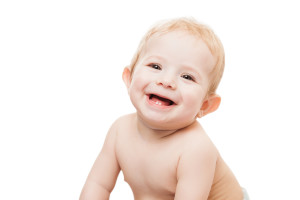By: Dr. Elizabeth Eggert
Caring for Baby Teeth
Ah, your child has reached another milestone. A new tooth. Now it’s time to focus MORE attention to good oral hygiene!
As your infant’s teeth start to appear, usually at six to eight months of age, it’s time to move from a washcloth to a baby toothbrush. By continuing to practice healthy habits, you can prevent or reduce tooth decay in infants and children.
It’s all about getting your baby used to teeth brushing as part of the daily routine.
Tips for brushing an infant’s teeth:
- Look for a small brush with a small head and large handle
- It’s best to use a non-fluoride toothpaste until your child can effectively spit out the excess, usually around age three
- Only a tiny smear of toothpaste is needed for babies and use a pea-sized amount for children
- The easiest way to brush a baby’s teeth is to have the child sitting on your lap with his or her head in the crook of your elbow
- Brush the teeth gently, with circles on the front and back surfaces
- Gently massage the gums
All children, even babies, should brush at least twice each day. You should brush for your child until about age four, but it is okay to give your child “a turn.” Children from four to eight year of age should be supervised when brushing and flossing, and should be helped at least once per day.
It’s important to know your child’s teeth and gums. Signs of baby tooth decay include pits or brown, black, or white spots on the teeth. Your child should be seen at Eggert Family Dentistry for a dental “well visit” by age one.
At first, teeth-brushing may be a struggle. Just try, try again. Make it fun by singing, counting, or telling a story – it shouldn’t be a battle. Again, it’s all about creating healthy oral habits that will last a lifetime.
